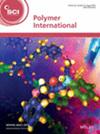Synthesis and characterization of novel electrospun nanofibers based on taro starch: influence of solvent and isolation agent on morphology and diameter
Asti Sawitri, Halida Rahmi Luthfianti, Dian Ahmad Hapidin, Dhewa Edikresnha, Pramudita Satria Palar, Neni Surtiyeni, Arie Wibowo, Khairurrijal Khairurrijal
求助PDF
{"title":"Synthesis and characterization of novel electrospun nanofibers based on taro starch: influence of solvent and isolation agent on morphology and diameter","authors":"Asti Sawitri, Halida Rahmi Luthfianti, Dian Ahmad Hapidin, Dhewa Edikresnha, Pramudita Satria Palar, Neni Surtiyeni, Arie Wibowo, Khairurrijal Khairurrijal","doi":"10.1002/pi.6709","DOIUrl":null,"url":null,"abstract":"<p>The utilization of natural polymers in producing electrospun nanofibers has received significant attention due to their biocompatibility, sustainability and diverse range of applications. This research focuses on synthesizing electrospun nanofibers derived from taro starch isolated from tubers. The investigation utilized SEM to examine the structure and size of the electrospun nanofibers. Formic acid and dimethyl sulfoxide solvents were tested to determine the most efficient solvent system for synthesizing taro starch nanofibers. The results demonstrated that the taro starch nanofibers can be effectively synthesized when using formic acid as the primary solvent. The study also investigated the impact of altering the volumetric ratio of formic acid to water on nanofiber morphology and size, finding that a lower formic acid fraction produced smooth fibers while a higher fraction resulted in fused fibers. The electrospinnability was further evaluated by comparing the effects of different isolation agents—distilled water and sodium metabisulfite—during the isolation process. The isolation agent significantly affected the fiber diameter, with notable differences observed in the smoothness of taro starch nanofibers at starch solution concentrations of 13, 15 and 17 wt%. Overall, the results of the study showed that the formation of taro starch fibers was influenced by the type of solvent, the volume fraction of the solvent to water, and the starch isolation agent. Successful fabrication of nanofibers from taro starch and its optimization parameters can contribute to the development of environmentally friendly nanofiber materials and offer a variety of applications in biomedicine, food and environmental engineering, such as tissue engineering, wound dressing, drug delivery, functional food delivery and food packaging. © 2024 Society of Chemical Industry.</p>","PeriodicalId":20404,"journal":{"name":"Polymer International","volume":"74 3","pages":"217-230"},"PeriodicalIF":2.9000,"publicationDate":"2024-10-28","publicationTypes":"Journal Article","fieldsOfStudy":null,"isOpenAccess":false,"openAccessPdf":"","citationCount":"0","resultStr":null,"platform":"Semanticscholar","paperid":null,"PeriodicalName":"Polymer International","FirstCategoryId":"92","ListUrlMain":"https://onlinelibrary.wiley.com/doi/10.1002/pi.6709","RegionNum":4,"RegionCategory":"化学","ArticlePicture":[],"TitleCN":null,"AbstractTextCN":null,"PMCID":null,"EPubDate":"","PubModel":"","JCR":"Q2","JCRName":"POLYMER SCIENCE","Score":null,"Total":0}
引用次数: 0
引用
批量引用
Abstract
The utilization of natural polymers in producing electrospun nanofibers has received significant attention due to their biocompatibility, sustainability and diverse range of applications. This research focuses on synthesizing electrospun nanofibers derived from taro starch isolated from tubers. The investigation utilized SEM to examine the structure and size of the electrospun nanofibers. Formic acid and dimethyl sulfoxide solvents were tested to determine the most efficient solvent system for synthesizing taro starch nanofibers. The results demonstrated that the taro starch nanofibers can be effectively synthesized when using formic acid as the primary solvent. The study also investigated the impact of altering the volumetric ratio of formic acid to water on nanofiber morphology and size, finding that a lower formic acid fraction produced smooth fibers while a higher fraction resulted in fused fibers. The electrospinnability was further evaluated by comparing the effects of different isolation agents—distilled water and sodium metabisulfite—during the isolation process. The isolation agent significantly affected the fiber diameter, with notable differences observed in the smoothness of taro starch nanofibers at starch solution concentrations of 13, 15 and 17 wt%. Overall, the results of the study showed that the formation of taro starch fibers was influenced by the type of solvent, the volume fraction of the solvent to water, and the starch isolation agent. Successful fabrication of nanofibers from taro starch and its optimization parameters can contribute to the development of environmentally friendly nanofiber materials and offer a variety of applications in biomedicine, food and environmental engineering, such as tissue engineering, wound dressing, drug delivery, functional food delivery and food packaging. © 2024 Society of Chemical Industry.



